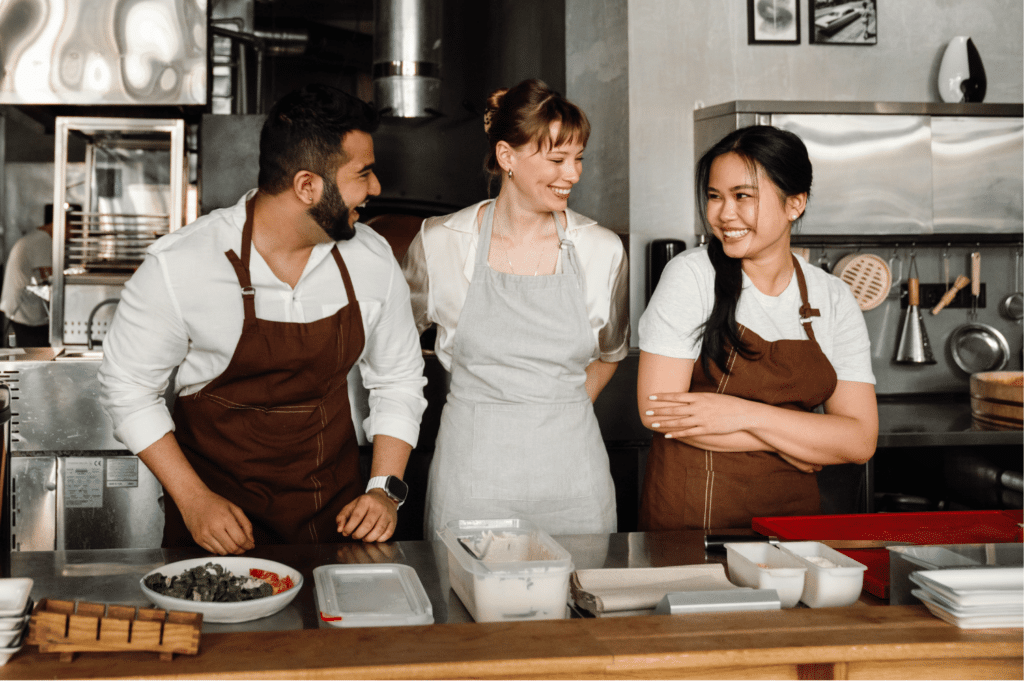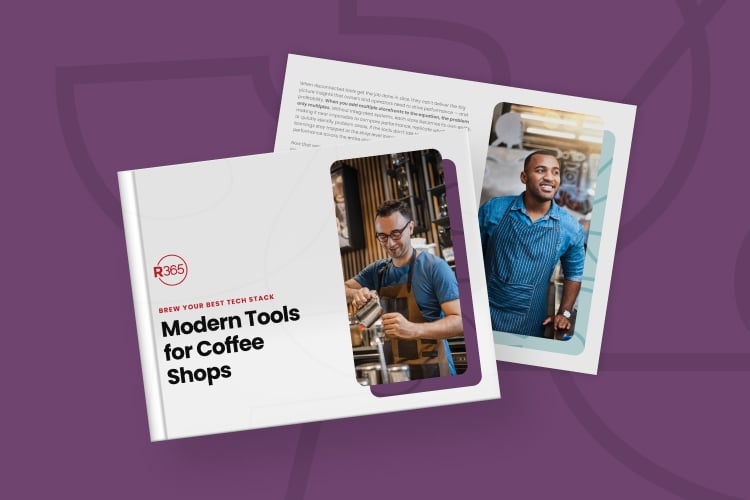Marketing for restaurants has never been more critical. Your online presence is a key component of a successful marketing effort for your restaurant business. Marketing your restaurant in a constantly changing digital world can be challenging, but digital marketing is essential both for converting former dine-in customers into takeout and delivery customers, and bringing in new and existing customers when restaurant restrictions are lifted.
When starting a marketing campaign, it’s first essential to understand your target audience. Are you marketing to young millennials or families with kids? Keep in mind how different groups respond to different advertising. By understanding your audience, you can ensure your brand message is heard clearly by your target customers, and you are spending your marketing resources wisely.
With your audience in mind, here are eight creative restaurant marketing ideas and tips that can help you thrive through this challenging time and beyond.
1. Prioritize local SEO
Local Search Engine Optimization (SEO) is optimizing your local restaurant website to rank highly on Google pages for the keywords that local area users will search about your city or state (like “best pizza Chicago”). To optimize your website for local SEO, work off of the keywords your audience is searching, using free tools like Google Keywords Planner or Keywordtool.io. Then, focus your website development on ranking for these terms.
Local SEO is not simple to do, but it can have big rewards. With 86% of people using the internet to find a local business, being listed in the first results the search audience sees can have a huge impact on your visits and revenue.
2. Maintain an accurate Google My Business profile
Having a complete Google My Business profile, Yelp profile, and local listings can increase your chances of grabbing the customer’s attention, especially if they are in a hurry. Because it is so easy for potential customers to just do another search if they are missing information, it is imperative to make your restaurant listing complete and accurate.
By claiming your Google local business listing, you can control at least part of what your audience sees when they search for your business. Profiles also have the potential to help your SEO ranking, as well as providing additional links to online reservations or ordering.
3. Promote user-generated content (UGC)
You probably already have loyal customers snapping beautiful pictures of your food. This “user-generated content”, shared freely on social media, is a valuable kind of free advertising. Potential customers are already looking at your social media page; nearly half (45%) of diners in the United States report having tried a restaurant for the first time because of one of the restaurant’s social media posts. By leveraging and rewarding your loyal customers as “influencers”, you can retain existing customers as well as create interesting content that can pull in potential customers.
To drum up user-generated content, consider running a social media contest. A photo contest of customers eating their favorite meal at your restaurant will generate submissions that you can share across your social networks, and you can incentivize photos with random prizes, like appetizers or drinks at your restaurant.
4. Utilize remarketing (or retargeting) ads
Your online advertisement strategy can be strengthened by adding on remarketing ads, which can be executed on Facebook, Instagram and Google (via pay-per-click ad buying). Remarketing ads aren’t placed in Google search results, but rather, on a website where Google advertising space has been purchased.
For example, if someone visits a restaurant’s “make a reservation” page but doesn’t submit the form, and then sees an ad showing beautiful pictures of your food on Facebook, that’s a retargeted ad. Remarketing is a long-term strategy, investing in multiple touchpoints to convert an online potential customer to a loyal in-person diner.
5. Use your email database
Reach out to your customer base via email marketing and/or text message with important updates to your business, new promotions, and measures your restaurant is taking to keep the public and its employees safe during these times. It can go a long way toward boosting morale, keeping customers connected to your business, and maintaining their confidence in your safety and integrity.
In your email marketing, ensure that you provide updated hours of operation (if applicable) and ways diners can still order their favorite food from your restaurant (curbside pickup, carryout, delivery service, etc.) Make your email easily shareable by adding a “forward to a friend” button.
6. Enable mobile ordering
With customers demanding more personalization and flexibility in their ordering. The largest shift comes from restaurants developing relationships with delivery services. The ease and convenience of online ordering appeals especially to millennial customers, and restaurants are benefiting from the visibility of being promoted on delivery apps and websites.
7. Optimize your menu engineering
Because your menu is one of the most visible pieces of restaurant marketing, maintaining a relevant, profitable menu is essential now more than ever. Creating a temporary menu for takeout and delivery requires a balance of profitability and popularity, driven by accurate data. Using menu engineering data in your marketing efforts—for instance, ensuring that your promotional offer features a high-margin, high-popularity item—can ensure you are making food cost decisions that add to your customers’ positive experience and to your restaurant’s bottom line.
8. Find nearby customers with location-specific ads
Most people are looking to eat close to their location while they’re quarantined at home, so getting ads in front of people in your geographic area can give the biggest ROI for ad dollars. Geo-targeting ads are offered by all major advertising services, including Google Ads, Facebook, and Twitter. Location-specific ads help control your costs by narrowing your advertising focus to the people most likely to visit your restaurant and avoiding the people outside of your delivery range or those who won’t make the hike to your restaurant.
9. Get involved in your community
While there is currently a focus on digital marketing, don’t forget to look in your own backyard. More than most business, restaurants rely on local customers – and the people in your community are most likely to make up your “regulars.”
Consider creating some promotions specifically for your community – a Wednesday discount for the neighborhood association, or a happy hour for a local business group. Tying your restaurant to another local business that attracts a similar clientele can bring you more customers without requiring additional marketing dollars. By working with the right partner, you can leverage their existing network to promote your own business.
10. Encourage Yelp reviews
Even if you never set up a Yelp account, people can review you – so you might as well be proactive about your Yelp reputation. With a business account, you are able to fill out your profile by adding accurate photos, store hours, location, and menus.
A proactive marketing strategy for reviews is two-fold. When you need good Yelp reviews, it’s too late to create most of them – making an effort to consistently solicit positive reviews, by reminding customers or by offering a free drink for a review, can have long-term benefits. When you receive negative reviews, respond to comments in a polite, professional manner. By addressing complaints, you not only increase your chances of retaining a customer by resolving their issue, but you can also show other potential and existing customers that you are a proactive, involved manager or operator.
11. Ensure mobile-friendly website + menu
With more than 50% of smartphone users reporting that they use their phones for rewards or loyalty programs, and Google reporting that more searches are now taking place on mobile devices than on computers, a mobile-friendly online presence is essential.
In addition to your online search presence on review sites and search engines, your own website and menus should be optimized for mobile. With an easy-to-read, accurate menu, and easily accessible information about your hours, location, and contact information on your website, you are removing potential barriers to drawing in mobile customers.
12. Focus your social media marketing
Social media platforms (like Facebook, Instagram, Twitter, Pinterest, LinkedIn, Snapchat to start) are everywhere. But before you stretch yourself too thin, here’s the secret: you aren’t required to use all of them.
Instead, the key is to understand where your audience is, and to focus on the social media platforms they are using. By focusing your marketing energy on sharing content where your customers already are, you can get the largest social media ROI.
Creating interesting and relevant content while monitoring interactions and activity can be difficult to keep up with. For today’s restaurant marketers, there are both paid social media management tools and some common free options, like HootSuite and Buffer. If you need to outsource, consider posting jobs at a local university to offer paid internships in social media to marketing students.
13. Leverage video
Beautiful photos of your food are one of your best marketing tools. But while social platforms like Instagram have made snapping a plate photo the new norm, more and more restaurant owners, especially those targeting the millennial audience, are experimenting with shooting short videos for Instagram and YouTube.
With YouTube as the second largest search engine in the world, creating a video channel about what happens at your restaurant can have a wide reach. Multiply your efforts by posting part of the video on Instagram and sending your audience to watch the full video on your website to generate more traffic for your site. With interesting, short content like behind-the-scenes at your restaurant, interviews with the staff, and a chef’s preview of an upcoming menu, you can grow interest in your business while growing traffic to your online presence.
Conclusion
Get creative with your digital marketing. Restaurant marketing strategies are complex and ever-changing, but using creative strategies, informed by data about your restaurant customers and operations, can help your restaurant marketing drive takeout and delivery revenue during this unprecedented time in the restaurant industry.
If you’d like to learn more about marketing your restaurant, download the e-book, Marketing Tips for Promoting your Restaurant Business.



